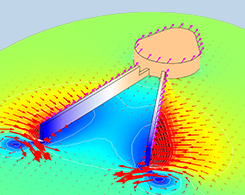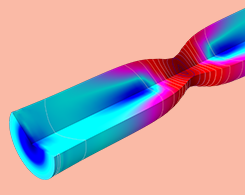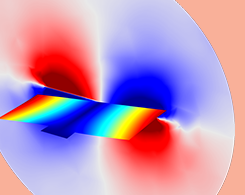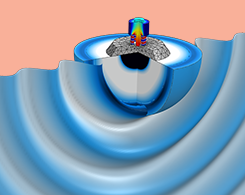Structural & Acoustics Blog Posts

Calculating the Heat Transfer Coefficient for Flat and Corrugated Plates
What is the heat transfer coefficient, and how do you calculate it? This blog post includes a theoretical background and demonstration of 2 examples in COMSOL Multiphysics®.

Fine-Tuning the Design of Piezoelectric Transducers with Simulation
A variety of use cases and a variety of physics: Piezoelectric transducer designs need to account for electric currents, pressure acoustics, stress-strain, and acoustic-structure interaction.

Defying Gravity with a Realistic Acoustic Levitator Model
It’s not just science fiction: Objects really can levitate. 1 way this is possible is by using sound waves to lift and suspend particles midair. Simulation can broaden the use of this technology.

Modeling Multi-Ply Materials with Composite Materials Technology
In a follow-up to a previous blog post on paper mechanics modeling, Eric Linvill of Lightness by Design compares 3 methods of analysis for multi-ply materials such as paperboard.

Modeling Fluid-Structure Interaction in Multibody Mechanisms
To model advanced FSI scenarios, such as swimming mechanisms or airflow around a wind turbine blade, you can use the Fluid-Structure Interaction, Pair multiphysics coupling.

Evaluating the Necking of an Elastoplastic Metal Bar Benchmark Model
To determine the strength of elastoplastic materials, engineers often use uniaxial testing to analyze necking instability. This benchmark model proves that simulation is also a reliable method.

How to Model Different Types of Damping in COMSOL Multiphysics®
Structural dynamics analyses can be difficult if you have to account for damping. Get a demonstration of how to use the different numerical models for damping in COMSOL Multiphysics. Part 2 of 3.

Damping in Structural Dynamics: Theory and Sources
Here’s your introduction to the theory behind damping in vibrating structures, as well as its sources, including internal losses, friction, sound emission, and more. Part 1 of 2.
